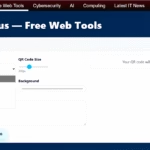I set the stage for 2025 by summarizing which state statutes take effect and when, so I can plan my year instead of reacting to surprises. I list key start dates and cure windows for Delaware, Iowa, Nebraska, New Hampshire, New Jersey, Tennessee, Minnesota, and Maryland.
My goal is clarity: I explain scope, rights, obligations, minors’ rules, enforcement, and a practical road map for compliance. I note that the FTC still enforces under the FTC Act and that California’s CPRA remains a common baseline.
I flag stricter provisions like Maryland’s minimization standard and New Jersey’s assessment-before-processing rule. I also highlight cure periods and their end dates because those windows shape how fast I must remediate issues if a regulator contacts me.
By the end of this guide, I will offer clear, actionable steps I can apply across jurisdictions, explain converging consumer rights, and outline universal opt-out and assessment expectations for my operations.
Key Takeaways
- I summarize which state rules take effect and their cure periods so I can plan remediation timelines.
- I explain enforcement risks, including FTC actions and CPRA influence on multi-state programs.
- I call out major divergences like Maryland’s minimization and New Jersey’s assessment rule.
- I outline essential controls: opt-outs, DPIAs, sensitive handling, and minors’ protections.
- I promise a practical roadmap with templates and vendor steps for consistent compliance.
Why 2025 Is a Turning Point for U.S. Data Privacy—and How I’m Framing This Ultimate Guide
This year reshapes how I approach compliance. The U.S. still lacks a single federal framework, so a patchwork of sector rules and state statutes governs handling of personal information.
I see three consequences. First, multiple state regimes now overlap and diverge, which raises operational complexity for my team. Second, the FTC remains active and can act on unfair or deceptive practices, so regulatory risk is broader than just each state’s rule.
My plan is risk‑based. I sequence work by effective dates, applicability thresholds, cure windows, and must‑do obligations. I map my program to a CPRA-inspired baseline, then layer in state deltas like Maryland’s minimization and New Jersey’s assessment timing.
Practically, I focus on rights handling, consent and opt-out, assessments, sensitive handling, minors, and vendor controls. Later sections include checklists and templates so I can act quickly and show remediation during cure periods.
Key 2025 Effective Dates by State and Cure Periods at a Glance
I sort states by launch date and cure length to shape an executable remediation plan.
Get your copy now. PowerShell Essentials for Beginners – With Script Samples

Get your copy now. PowerShell Essentials for Beginners – With Script Samples
Early launches: Delaware, Iowa, Nebraska, and New Hampshire begin on Jan 1. New Jersey follows on Jan 15. These early starts demand immediate legal review and vendor checks.
- Iowa and Nebraska include ongoing cure windows with no sunset, so I treat those as continuous remediation obligations, not a safety net.
- New Jersey’s 30-day cure runs until July 15, 2026, which shapes mid-2026 risk exposure for my programs.
- Minnesota’s cure ends Jan 31, 2026; Maryland’s extends to Apr 1, 2027, so I plan redesign work now for minimization requirements.
| State | Effective Date | Cure Period | Cure Sunset |
|---|---|---|---|
| Delaware | Jan 1, 2025 | 60 days | Dec 31, 2025 |
| Iowa | Jan 1, 2025 | 90 days | No sunset |
| Nebraska | Jan 1, 2025 | 30 days | No sunset |
| New Hampshire | Jan 1, 2025 | 60 days | Dec 31, 2025 |
| New Jersey | Jan 15, 2025 | 30 days | Jul 15, 2026 |
| Tennessee | Jul 1, 2025 | 60 days | No sunset |
| Minnesota | Jul 15, 2025 | 30 days | Jan 31, 2026 |
| Maryland | Oct 1, 2025 | 60 days | Apr 1, 2027 |
Practical next steps: I align milestones 30–60 days before each start date. Cure periods demand evidence of concrete fixes, so I build playbooks with timelines, remediation logs, and vendor attestations. I also watch Montana and Oregon for overlapping changes later in the year.
Scope and Applicability: Do These Privacy Laws Apply to My Business?
My first step is a scope filter: revenue, entity type, and which categories of personal information I touch.
I compare Nebraska’s all-entity approach with Tennessee’s revenue threshold so I can quickly see if I’m covered. Nebraska applies regardless of volume or income. Tennessee only reaches firms with over $25 million in revenue.
Exemptions shift the picture. Some states give GLBA relief at the entity level while others limit exemption to specific records. That difference can leave parts of my operation regulated even if the parent company is exempt.
- I map GLBA and HIPAA exemptions by state so I know whether an entity or particular records are carved out.
- I highlight that New Jersey lacks a FERPA exemption and that Delaware, Maryland, and New Jersey include higher education.
- I note nonprofits are not broadly exempt in Delaware, Minnesota, and New Jersey.
Nebraska and Minnesota offer small-entity exemptions per SBA rules, but these breaks have limits if I handle sensitive information or process minors’ profiles.
| State | Scope Trigger | GLBA Exemption | HIPAA Exemption |
|---|---|---|---|
| Nebraska | All companies operating in state | Entity-level included | Entity & data-level |
| Tennessee | Revenue > $25M | Entity & data-level | Entity & data-level |
| Minnesota | Thresholds apply; small-entity SBA exemption | Data-level only | Data-level |
| New Jersey | Standard thresholds; higher-ed in scope | Entity-level included | Data-level |
Practical steps I take: I confirm thresholds every year, document my applicability findings with citations, and log any non-exempt activities that could still trigger obligations elsewhere.
Consumers’ Rights I Must Honor in 2025
I must support a clear slate of consumer rights across jurisdictions and adapt my request flows accordingly.
Most statutes now grant core protections: access, deletion, correction, portability, and opt-outs for targeted advertising, sales, and high‑impact profiling. I build my rights portal so each request is verified, routed by state, and logged with a timeline for response.
I flag Iowa as an exception. It lacks a correction right and offers no profiling opt‑out. That forces a different handling path for requests originating in Iowa.
Minnesota adds transparency: consumers can question profiling results, see inputs used, and request a list of third parties that got their personal data. Delaware and Maryland instead permit requests for categories of recipients, so my fulfillment playbook must distinguish lists versus categories.
- I update my maps so I can supply accurate, portable copies without exposing security risks.
- I train staff on state routing, verification, and disclosure differences.
- I record the legal basis when I deny or limit a request and offer an appeal route.
data privacy laws update 2025: what small businesses need to know
I mark key calendar dates so my team can sequence policy rewrites, vendor notices, and training without surprises.
Early 2025 launches (DE, IA, NE, NH on Jan 1; NJ on Jan 15) mean I must finish priority fixes first. Mid‑to‑late starts (TN July 1, MN July 15, MD Oct 1) give rolling deadlines but still demand planning.
- Calendar and checklist: tie each state start date to a policy edit, vendor attestation, and a training slot.
- State twists: NJ requires assessments before certain processing; MD tightens minimization and bans selling sensitive categories; MN nudges public CPO disclosure.
- Rights and opt-outs: operationalize access, deletion, portability, and universal opt-out signals; watch for NJ technical specs.
- Children: implement under‑13 safeguards and teen consent flows (NJ) and MD’s under‑18 ad limits.
- Remediation: cure periods are not a substitute for readiness—regulators expect prompt, documented fixes.
Next steps: build a master log with citations, assign owners, and align vendors. I prioritize training so my team executes verifications, opt-outs, and minimization consistently.
New and Heightened Compliance Obligations That Change My To-Do List

My compliance calendar now includes mandatory pre-processing reviews and tighter collection limits that change priorities.
New Jersey’s mandatory assessment before high-risk processing
New Jersey requires a documented data protection assessments before I begin any processing that poses heightened risk. I schedule DPIAs up front so I avoid prohibited processing without an assessment. I also add logs and versioning to show timing and mitigations.
Maryland’s stricter minimization and a ban on selling sensitive data
Maryland forces collection that is “reasonably necessary and proportionate,” and demands “strictly necessary” handling for sensitive personal data. I redesign forms and flows to collect less, and I block any sale of sensitive data entirely—consent does not override the ban.
Minnesota’s naming requirement and assessment expectations
Minnesota effectively requires me to name a compliance lead in my policy. I will publish a CPO-equivalent contact and keep it monitored. Most states expect routine data protection assessments; Iowa is an exception, but I keep a unified DPIA process for consistency.
- I update assessment templates for profiling, targeted ads, minors, and large-scale processing.
- I revise vendor contracts to support minimization, opt-out honoring, assessments, and incident cooperation.
- I treat these new obligations as program-level controls tied to my risk register.
Universal Opt-Out Signals and Standardized Opt-Out Mechanisms
Several states now require a single, global opt-out mechanism and I treat that as a priority control for my online systems.
Where it applies: Delaware, Nebraska, Minnesota, New Hampshire, New Jersey, and Maryland all require honoring universal signals. Texas already required global opt-out tech by Jan 1, 2025, so many vendors support this standard.
Where universal opt-out applies in 2025 and how I should operationalize it
I map every jurisdiction that mandates a universal opt-out and confirm my site and apps detect those signals.
- I align my consent management platform and adtech partners so they accept global opt-out flags and stop re-enabling tracking.
- I log preference states for auditability and route opt-outs for targeted advertising, sale, and profiling consistently.
- I test conflicts between browser signals and user-level choices and default to the more protective option.
Watching New Jersey’s forthcoming technical specifications
I build flexibility into my consent layer so I can update implementation quickly once New Jersey’s Division issues specs.
“Global opt-out must be respected across systems and logged for proof of compliance.”
| Requirement | Where | Operational step |
|---|---|---|
| Honor universal opt-out | DE, NE, MN, NH, NJ, MD, TX | Detect signals; block tracking; log preferences |
| Consent layer flexibility | All affected states | Modular CMP; fast config updates |
| Auditability | All affected states | Preference logs; vendor attestations |
Children’s and Teens’ Data: Sensitive by Default and New Duties
I must treat minors’ profiles as high‑risk by default and lock down collection, retention, and sharing for under‑13 users. Across the new state regimes, under‑13 records are classified as sensitive personal data, so I design flows that default to the strictest guardrails.
Under‑13 protection and design basics
I limit fields, avoid profiling, and keep retention short for any account or record flagged as belonging to children. I build parental consent gates and require verifiable approval before processing sensitive data for an under‑13 consumer.
New Jersey: affirmative consent for teens
New Jersey requires affirmative consent before targeted advertising, sale, or profiling for ages 13–17 when I know or willfully disregard age. I add explicit opt‑in flows and audit logs so each consent is time‑stamped and revocable.
Maryland: under‑18 ad limits
Maryland bars processing or selling personal data of consumers under 18 for targeted advertising if I know or should know their age. I implement age signals, risk indicators, and vendor blocks so downstream partners honor these limits.
- I implement self‑attestation plus risk‑based checks and propagate age flags to vendors.
- I narrow collection and retention for minors to what is strictly necessary.
- I design clear UI that avoids dark patterns and records parental or teen consent.
- I update notices and keep detailed logs for consent, age gating, and opt‑outs.
Enforcement, Defenses, and Risk: How States Will Police Compliance
Enforcement will largely rest with state attorneys general, so I focus on evidence, timing, and credible remediation when I revise my program.
AG-only enforcement means there is no private right of action in the new statutes. That changes my litigation risk profile, but it does not reduce the need for tight controls or speedy fixes.
Tennessee’s affirmative defense
Tennessee offers an affirmative defense if I align my program with the NIST Privacy Framework or secure APEC CBPR/PRP certification. I treat this as a practical risk-reduction path.
Watch New Jersey rulemaking
New Jersey authorizes its Division to issue implementing rules. I prepare for technical guidance on universal opt-out and assessment content and will update my systems when rules arrive.
- I keep cure-period playbooks ready with remediation logs and vendor attestations.
- I verify incident response and notification templates meet state timing and content needs.
- I brief my board on enforcement exposure, potential penalties, and the value of a documented program.
- I build a compact, auditable repository so an AG inquiry can be answered quickly.
“Proactive documentation and alignment with recognized frameworks reduce enforcement risk.”
| Enforcement | Defensive option | Action I take |
|---|---|---|
| AG-focused | N/A | Maintain logs, cure readiness |
| Tennessee | NIST/APEC defense | Align program; seek certification |
| New Jersey | Rulemaking | Monitor rules; update CMP |
My Practical Compliance Roadmap for 2025
I begin by building a simple inventory that tags high-risk categories and minors so I can focus remediation where it matters most.
First step: I map each processing purpose against Maryland’s “reasonably necessary and proportionate” rule and mark any records that trigger “strictly necessary” handling for sensitive personal data. This limits collection and sharing at the source.
I redesign forms and retention rules so only required fields remain. I enforce shorter retention for minors and sensitive profiles. Vendor flows get the same flags.
Designing consent and universal opt-outs
I implement consent flows that separate targeted ads, sale, and profiling. I ensure systems detect universal opt-out signals and log preference states for auditability.
Operationalizing DPIAs and high‑risk review
I add DPIA triggers for new tech, large-scale profiling, targeted advertising, or any cross-context behavioral use. New Jersey’s pre-processing assessment requirement becomes a gating step in my project checklist.
Leadership, vendors, and training
I name a privacy lead in my policy, publish a monitored contact, and update vendor contracts to require opt-out honoring, minimization, DPIA support, subprocessor lists, and audit cooperation.
I train staff on request handling, teen consent, and state deltas like Iowa’s limited rights and New Jersey’s assessment timing. Finally, I keep a compliance calendar tied to effective dates, cure windows, and rulemaking milestones.
“Inventory, minimization, and documented assessments make regulatory questions easier to answer.”
| Roadmap Component | Immediate Action | Owner | Measure |
|---|---|---|---|
| Inventory & tagging | Catalog processing; flag minors and sensitive | Privacy lead | Tagged registry; gap log |
| Minimization & retention | Remove nonessential fields; shorten retention | Product & legal | Form audits; retention policy |
| Consent & opt-out | Implement CMP; honor universal signals | Engineering | Preference logs; vendor attestations |
| DPIAs & assessments | Trigger reviews; document mitigations | Risk team | Assessment repo; approval stamps |
Federal and Sectoral Context I Can’t Ignore
I frame my state compliance work against federal authority and sector rules so my program stands up under scrutiny.
How the FTC enforces through unfair or deceptive practices
The FTC targets misleading notices, broken promises, and failures to provide reasonable security.
I monitor settlements closely because remedies there often dictate required fixes and monitoring terms. I test access controls, encryption, and incident response against the agency’s expectations.
CPRA/CCPA and the CPPA as a multi-state baseline
The CPRA expanded rights like rectification and restricted handling of sensitive information and empowered the CPPA as an enforcer. I use CPRA-inspired disclosures when I draft my notices and retention limits so my notices meet many state standards at once.
- I keep contracts that require processors to match my protections and help with request fulfillment.
- I document alignment with COPPA, HIPAA, GLBA, FCRA, and FERPA so no sectoral gaps remain.
- I map my notices, security controls, and vendor obligations to the major acts and the CPPA benchmark for consistent enforcement readiness.
“Clear notices, documented controls, and enforceable contracts reduce enforcement risk.”
What’s Next: Late‑2025 and 2026 Changes on the Horizon
I watch several late‑2025 and 2026 rule changes closely because they will reshape targeted advertising and cross‑border handling for my products.
Oregon’s expanded scope and youth protections
Oregon HB 2008 will bar processing for targeted advertising and certain profiling of anyone under 16, regardless of consent. It also bans selling records of under‑16 users and will stop sales of precise geolocation for all consumers once it takes effect on Jan 1, 2026.
HB 3875 brings vehicle makers under the state privacy act as of Sept 26, 2025, so my connected services must follow the state standard even if thresholds do not apply.
Virginia and sensitive health protections
Virginia’s new protections for reproductive and sexual health information take effect July 1, 2025. I will review tracking, disclosures, and consent flows that touch that category and tighten handling where needed.
Montana and age‑appropriate trends
Montana lowers thresholds (25,000 residents, or 15,000 plus revenue triggers) and keeps a perpetual 60‑day cure period starting Oct 1, 2025. I treat its rule as another prompt for early fixes rather than a safety net.
- I track app store accountability and age‑appropriate design moves in Texas, Nebraska, Vermont, and Utah.
- I map product tasks now so changes ship before new provisions take effect.
| Jurisdiction | Key change | Effective |
|---|---|---|
| Oregon | Under‑16 ad/profiling ban; precise geolocation sale ban | Jan 1, 2026 |
| Oregon (vehicles) | Apply state act to vehicle manufacturers | Sept 26, 2025 |
| Virginia | Reproductive/sexual health protections | Jul 1, 2025 |
| Montana | Lower thresholds; ongoing 60‑day cure | Oct 1, 2025 |
“I design flexible controls now so I can minimize rework when late‑2025 and 2026 rules kick in.”
Get your copy now. PowerShell Essentials for Beginners – With Script Samples

Get your copy now. PowerShell Essentials for Beginners – With Script Samples
Conclusion
My final takeaway is a concise action plan that keeps my program audit‑ready. I confirm applicability across states, prioritize rights handling, and implement universal opt‑outs while meeting Maryland’s stricter minimization and New Jersey’s assessment requirements.
I lock in DPIA workflows early, finalize minors’ controls (including New Jersey teen consent and Maryland under‑18 ad limits), and validate consent, opt‑out, and profiling controls across web, mobile, and adtech partners with test logs. I keep a single source of truth for maps, notices, and request playbooks, schedule quarterly reviews for rulemaking in Oregon, Montana, and Virginia, and measure progress with tickets, assessments, and notices so I can respond confidently if a state AG calls.
FAQ
Which states’ laws take effect early in 2025 and how should I prioritize compliance?
Delaware, Iowa, Nebraska, New Hampshire, and New Jersey start early in 2025. I prioritize by mapping my customer footprint and processing activities against each state’s scope. If I do business or target residents in those states, I start with a data inventory, identify sensitive categories, and implement mandatory assessment and notice changes first.
How do mid‑to‑late 2025 start dates affect my timeline for meeting requirements?
Tennessee, Minnesota, and Maryland begin later in 2025, which gives me time to phase in controls. I use the interim window to pilot privacy assessments, update contracts, and train staff so I can meet stricter rules once they take effect.
What does a cure period mean for my compliance deadlines?
A cure period lets me fix a violation after notice before enforcement proceeds. I still treat it as a prompt to remediate quickly. I document corrective steps and timelines so I can show good faith if regulators inquire.
How do I know if a state law applies to my company?
I check each statute’s thresholds and scope. Nebraska, for example, uses a low or no-threshold approach, while Tennessee requires million in revenue. I assess revenues, processing volume, and whether I sell or target residents to determine applicability.
Are there exemptions for financial or health institutions?
Yes. Federal regimes like GLBA and HIPAA create entity- and data-level exemptions. Even if exempt, I still consider voluntary best practices because other state rules or FTC oversight may still apply to my operations.
Do nonprofit organizations and colleges face different rules?
Some states include specific carve-outs or tailored language for nonprofits and higher education. I review the text for Delaware, Minnesota, New Jersey, and Maryland to see where exemptions or special obligations apply.
Are there meaningful small business exemptions I can rely on?
Nebraska and Minnesota include limited small business exceptions, but they often have practical limits. I don’t assume blanket immunity; instead I verify thresholds and prepare minimal compliant practices where required.
What consumer rights must I honor under the new state laws?
Most states require access, deletion, correction, portability, and opt-outs. I build workflows and portals to accept and process these requests within statutory timeframes and document responses.
Which states deviate from the baseline rights I should watch?
Iowa omits correction and profiling opt-outs, while Minnesota adds transparency and a right to question profiling outcomes. I tailor my privacy notices and request handling to reflect each jurisdiction’s unique rights.
What new compliance obligations should I add to my checklist?
Expect mandatory assessments for high-risk processing (New Jersey), stricter data minimization and bans on selling sensitive categories (Maryland), and public disclosure or implicit officer roles in Minnesota. I update internal policies, DPIAs, and vendor contracts accordingly.
How do data protection assessments differ across states?
Most states expect assessments for risky processing, but Iowa offers exceptions. I standardize a DPIA process that satisfies the strictest states and document when an assessment is not required.
What is the universal opt-out signal and how do I implement it?
Universal opt-out aims to let consumers block targeted advertising or sales consistently across sites. I monitor rulemaking, implement signal recognition where required, and honor standardized user choices in ad tech and marketing stacks.
Are there special rules for children and teens I must follow?
Yes. Children under 13 are treated as sensitive in many states. New Jersey requires affirmative consent for ages 13–17 for ads, sales, and profiling. Maryland further restricts targeted ads to under-18s. I adjust age‑gating, consent flows, and ad targeting accordingly.
Who enforces these laws and can consumers sue my business directly?
Most new statutes grant enforcement to state attorneys general, not a private right of action. I still prepare for investigations by keeping records, responding to AG inquiries, and implementing remediation plans.
What defenses or certifications might reduce my enforcement risk?
Tennessee offers an affirmative defense if I comply with recognized frameworks like NIST or APEC. I adopt such standards, run audits, and maintain certification evidence to strengthen my defense posture.
How will pending rulemaking, especially in New Jersey, affect my obligations?
New Jersey’s rulemaking can define technical specs for assessments and opt-outs. I track proposed rules, submit feedback during public comment, and plan to adapt systems when final regulations issue.
What are the practical first steps for my 2025 compliance roadmap?
I start with a full inventory, minimize collection, classify sensitive categories, and conduct DPIAs for high-risk processing. I design consent and opt-out mechanisms that work across states and appoint a privacy lead with public contact details.
How should I integrate federal and sectoral obligations with state rules?
I align with FTC guidance and benchmark against CPRA/CCPA principles. Where federal or sectoral regimes apply, I ensure state controls don’t conflict and use the stricter standard when necessary.
Which late‑2025 and 2026 changes should I plan for now?
Watch Oregon’s changes on under‑16 ad limits and geolocation, Virginia’s reproductive health protections effective July 2025, Montana’s lowered thresholds, and age‑appropriate design trends in Texas, Nebraska, Vermont, and Utah. I build flexible processes to incorporate these shifts.
How do I keep consumer rights and operational duties consistent across multiple states?
I adopt a highest-common-denominator approach: implement the strictest requirements as baseline, maintain clear mappings to state variations, and use centralized request handling and recordkeeping to ensure consistent responses.
What practical controls reduce risk around sensitive categories and targeted advertising?
I limit collection to purpose, use encryption and access controls, remove identifiers when possible, and restrict targeted ad use for minors. I also update vendor agreements to cover bans on selling sensitive categories and require security attestations.
Related posts:
 CISSP Domain 2: Guide to Asset Security Fundamentals
CISSP Domain 2: Guide to Asset Security Fundamentals
 CISSP Domain 3: Security Architecture and Engineering
CISSP Domain 3: Security Architecture and Engineering
 How to Troubleshoot Common Computer Problems
How to Troubleshoot Common Computer Problems
 Free QR Code Generator Online – Create QR Codes Instantly
Free QR Code Generator Online – Create QR Codes Instantly
 Top 7 Free Web Tools to Boost Productivity
Top 7 Free Web Tools to Boost Productivity
 Free and Cheaper IT Books: Unlock Essential Knowledge
Free and Cheaper IT Books: Unlock Essential Knowledge






